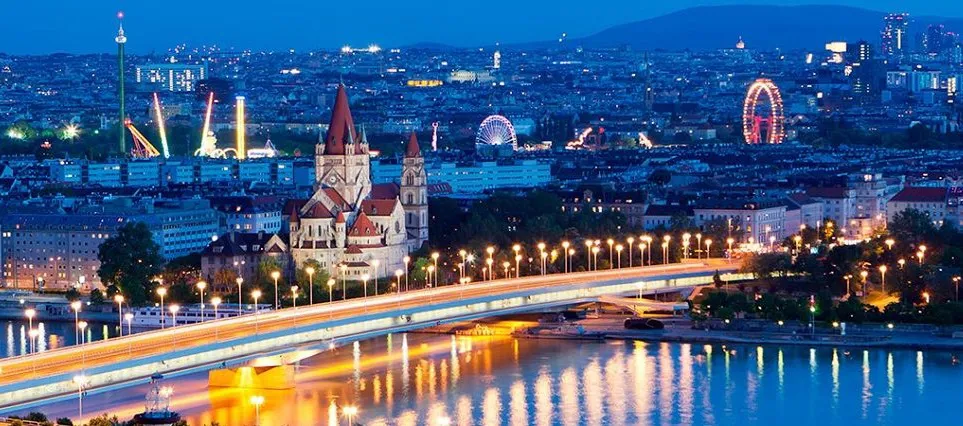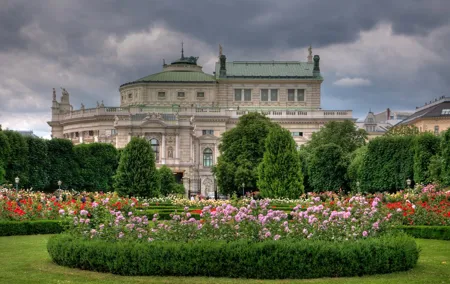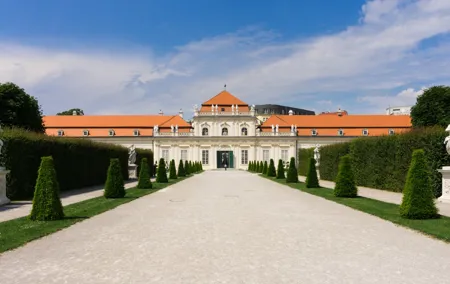Vienna
Vienna is synonymous with Strauss, waltz, savory pastries, parks, and wine. The Austrian capital, where different traditions and nationalities coexist for a long time, is a source of a somewhat cynical, but at the same time intriguing character of its locals. The city, located on the banks of the Danube at the foot of the Alps, has over time transformed into a strong empire, reflecting the splendid reign of the Habsburg dynasty.
The historical times have passed, but the sights of Vienna, preserved in their original form, still delight the eyes of those who come here, one way or another! The streets of Vienna are filled not only with the aroma of coffee but also with that of fresh pastries, which will undoubtedly make you stop. This city does not like haste; here, everything is dignified, every nook is filled with imperial splendor! Whoever comes to Vienna finds something of their own and keeps returning again and again!
When to go?
Vienna is located in an area with a moderate climate. The average temperature in the hottest month of July is 20 degrees Celsius, but quite often the sun heats the city's streets up to 30 degrees, and sometimes even higher. In winter, it can cool down to minus 15 degrees Celsius, but mostly the temperature stays above freezing. If you don't want to visit the city during the Christmas holidays, it's best to plan your trip for the beginning of June, when it's already warm enough, but there's no oppressive heat, and Vienna isn't yet filled with tourists.
What to buy?
Some of the most famous souvenirs are the porcelain items from the “Augarten” company, made in a palace that was built at the beginning of the eighteenth century. They can be purchased in the shop at the museum, also located in the former imperial residence. Crystal and porcelain figurines, as well as silver statuettes, various ashtrays, vases, bells, and dinner sets, are very popular.
The tableware and souvenirs decorated with reproductions and scenes from the famous Austrian modernist artist Gustav Klimt are very interesting. Cups, saucers, and figurines bring aesthetic pleasure and seem to transport you to a distant past.
Lovers of culinary souvenirs can purchase the famous “Mozart” candies and, if they manage to bring them home, they should buy the “Sacher” cake, whose recipe was invented by an assistant cook to the foreign minister Metternich in the first half of the nineteenth century.
What to try?
Among the starters, you can order a soup with meatballs, although in that place, soups are considered appetizers. The most famous dish of Vienna, Austria's capital, is the Wiener Schnitzel, made from veal and breaded in egg and breadcrumbs. The only dish that can rival it is Tafelspitz – the favorite dish of Emperor Franz Joseph I, which is made from boiled veal following the recipe preferred by the Austrian monarch. You should definitely try the sweet and strong Eiswein, a wine made from grapes that have been frozen while still on the vine. The apple strudel is a dessert that enjoys great popularity.
Himmelpfortgasse, 23
- Closed now
- $$$$
- Restaurants
- MICHELIN
The vegetarian restaurant TIAN boasts an extensive menu for gourmets who love vegetarian food a...
Praterstraße, 15, Leopoldstadt
- Closed now
- $$$$
- Restaurants
- MICHELIN
Mochi in Wien offers a vibrant dining experience where Asian and Japanese cuisines take center ...
Schleifmühlgasse, 16, Wieden
- Open now
- $$$$
- Restaurants
- Cafes
- Coffee houses
- Bakeries
Vollpension, situated in the vibrant city of Vienna, is a captivating spot where generations co...
Freyung, 3, Innere Stadt
- Closed now
- $$$$
- Restaurants
- MICHELIN
Trattoria Martinelli, situated in the vibrant city of Wien, offers a diverse menu that spans Eu...
Landstraßer Hauptstraße, 1D
- Closed now
- $$$$
- Restaurants
In Vienna, VAPIANO Wien Mitte offers a delightful dining experience that seamlessly blends Euro...
Mariahilfer Straße, 127
- Closed now
- $$$$
- Bars
- Restaurants
PETER PANE Burgergrill & Bar in Wien offers a delightful dining experience at a moderate price....
Walfischgasse, 11, Innere Stadt
- Closed now
- $$$$
- Bars
- Restaurants
Vapiano in Wien offers a delightful dining experience that won't break the bank. Known for its ...
Schubertring, 10-12, Innere Stadt
- Closed now
- $$$$
- Restaurants
A visit to Restaurant Meissl & Schadn Wien is an experience of refined Austrian elegance combin...
Landstraßer Hauptstraße, 4
- Open now
- $$$$
- Restaurants
- Cafes
- Coffee houses
- Bakeries
Joseph Brot Wien Bio Bäckerei in Vienna effortlessly combines a stylish setting with a deliciou...
Rochusplatz, 1, Landstraße
- Closed now
- $$$$
- Restaurants
- Steakhouses
El Gaucho At The Rochusmarkt in Wien offers a gourmet dining experience that delights steak ent...
Seilerstätte, 9, Innere Stadt
- Closed now
- Theaters
Ronacher in Vienna offers a stunning theatrical experience filled with grandeur and elegance. D...
Wallgasse, 18-20, Mariahilf
- Theaters
The Raimund Theater in Wien is a remarkable venue that seamlessly blends historical charm with ...
Innere Stadt, Schmetterlinghaus Palmenhaus Burggarten Hofburg
- Closed now
- Aquariums
- Safaris
- Theme Parks
In Vienna, there's a charming little haven known as Schmetterlinghaus. While compact in size, i...
Schultergasse, 5, Innere Stadt
- Cinemas
Artis International, located in the vibrant city of Vienna, is a top-rated English movie theate...
Gumpendorfer Straße, 63, Mariahilf
- Cinemas
Apollo - Das Kino in Vienna is a cinematic gem that perfectly blends historical elegance with m...
Hermann-Gebauer-Straße, 4, Donaustadt
- Closed now
- Fitness Clubs, Gyms
Cyberjump Wien 22 in Vienna offers a vibrant fusion of entertainment and fitness. With an impre...
Wienerbergstraße, 11, Favoriten
- Cinemas
Cineplexx Wienerberg in Wien stands out as a premier destination for movie enthusiasts. This im...
Opernring, 2
- Operas
- Theaters
The Vienna State Opera is among the best in the world. This is facilitated by an incredibly ful...
Maxingstraße, 13b
- Closed now
- Parks
- Zoos
Since 2010, it has proudly held the title of the best among European zoos. Many people are eage...
Landstraße
- Cinemas
In the vibrant city of Wien, the Village Cinema Wien Mitte offers a unique cinematic escape wit...
Habsburgergasse, 10A, Innere Stadt
- Closed now
- Museums
- Historical Buildings
Time Travel offers an unforgettable journey through Vienna's rich history, conveniently located...
Stubenring, 5, Innere Stadt
- Closed now
- Museums
- Historical Buildings
- Art Museums
- History Museums
The Museum of Applied Arts in Wien, a creation of Heinrich von Ferstel, immerses visitors in a ...
Museumsplatz 1
- Open now
- Museums
The MuseumsQuartier is an interesting place where one can fully experience Austrian culture. It...
Donauturmplatz, 1
- Closed now
- Parks
The Danube Tower is a unique piece of architecture, designed in 1964 as part of the preparation...
Riesenradplatz, 5
- Closed now
- Museums
The Madame Tussauds Museum is one of the branches of the collection of wax figures. It features...
Schönbrunner Schloßstraße, 47
- Open now
- Museums
- Palaces
- Historical Buildings
Schönbrunn is yet another example of Austrian Baroque buildings! In the past, it served as an i...
Domgasse, 5
- Closed now
- Museums
- Historical Buildings
- History Museums
Mozarthaus Vienna in Domgasse is the only remaining apartment in Vienna where Mozart lived. He ...
Prinz-Eugen-Straße, 27, Landstraße
- Closed now
- Museums
- Historical Buildings
- Art Museums
The Austrian Gallery Belvedere in Vienna offers a spectacular intersection of art, history, and...
Stephansplatz, 3
- Open now
- Churches, Cathedrals
The most quintessential symbol of Vienna is St. Stephen's Cathedral. It is its image that adorn...
Burgring, 7
- Closed today
- Museums
- Natural History Museums
The Natural History Museum in Vienna is one of the ten largest museums in the world, consisting...
Rotenturmstraße, 25
- Closed now
- $$$$
- Restaurants
- Cafes
The Hard Rock Cafe is a very rare and unusual find in Vienna, as it features rock music on a da...
Lerchenfelder Straße, 1, Neubau
- Closed now
- $$$$
- Bars
At Der Dachboden in Wien, you're set for a memorable night out with its stunning rooftop views ...
Mariahilfer Gürtel, 21, Rudolfsheim-Fünfhaus
- Closed now
- $$$$
- Bars
- Clubs
Travel Shack in Wien is your go-to destination for an unforgettable night out without breaking ...
Kärntner Straße, 19
- Closed now
- $$$$
- Bars
- Restaurants
- Cafes
SKY is one of the favorite spots for tourists, as it is located on the roof of the Steffl depar...
Franz-Josefs-Kai, 29
- $$$$
- Bars
- Clubs
Jazzland Club was founded over thirty years ago and is considered one of the oldest jazz clubs ...
Schönbrunner Straße, 222, Meidling
- Closed now
- $$$$
- Bars
- Clubs
U4 in Wien is where the city's night scene truly comes alive. This vibrant hotspot, known for i...
Kleeblattgasse, 5
- Closed now
- $$$$
- Bars
- Pubs
Kolar Pub is a wonderful, quiet place located in one of the oldest buildings in the Austrian ca...
Theobaldgasse, 9, Mariahilf
- Closed now
- $$$$
- Bars
Monami in Wien offers an inviting ambiance for those looking to enjoy a night out without break...
Bäckerstraße, 9
- Closed now
- $$$$
- Bars
- Restaurants
- Cafes
Alt Wien Cafe is a small cozy establishment located in the heart of Vienna. If you're looking f...
Universitätsring, 12, Innere Stadt
- Closed now
- $$$$
- Bars
- Restaurants
At WEIN & CO Schottentor in Vienna, indulge in a world-class wine selection within a sleekly re...
Wagramer Straße, 94, Donaustadt
- Closed now
- Malls
Westfield Donau Zentrum, a shopping haven since 1975, proudly stands in the vibrant city of Vie...
Vösendorfer Südring
- Closed now
- Malls
A few kilometers from the Austrian capital, specifically, in the suburb of Vösendorf, lies the ...
Landwehrstraße, 6, Simmering
- Closed now
- Malls
Huma Eleven in Wien offers a delightful shopping experience, boasting 90 diverse shops to explo...
Landstraßer Hauptstraße, 1B
- Closed now
- Malls
Wien Mitte The Mall in Vienna offers a delightful shopping experience with its impressive multi...
Olympiaplatz, 2, Leopoldstadt
- Closed now
- Malls
- Fashion Stores
- Food Stores
Stadion Center in Vienna offers a delightful shopping experience with a wide array of fashion s...
Albert-Schweitzer-Gasse, 6, Penzing
- Closed now
- Malls
Auhof Center in Wien offers a dynamic shopping experience with its compact layout and a wide va...
Handelskai, 94-96, Brigittenau
- Closed now
- Malls
Millennium City in Wien offers a vibrant shopping experience with a touch of convenience and en...
Am Hauptbahnhof, 1, Favoriten
- Closed now
- Malls
- Fashion Stores
Bahnhofcity Wien Hauptbahnhof serves as a vibrant shopping and dining hub in Vienna, with its m...
Gablenzgasse, 11
- Closed now
- Malls
The Lugner City shopping center is quite popular among both locals and visitors. Primarily, thi...
Grinzinger Straße, 112, Döbling
- Closed now
- Malls
Q19, located in Wien, has been a popular shopping destination since its opening on October 28, ...
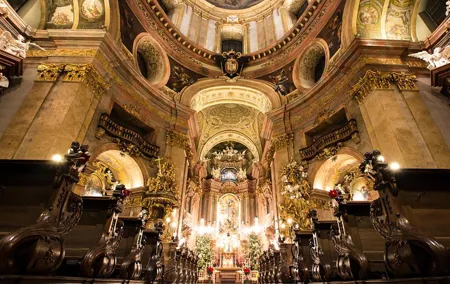
- Shows, Theater & Nightlife
1 hour
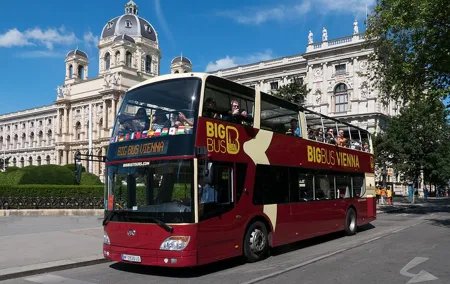
- City Tours & Sightseeing
1 hour

- City Tours & Sightseeing
2 hours

- City Tours & Sightseeing
8–9 hours

- City Tours & Sightseeing
2 hours

- City Tours & Sightseeing
13 hours

- Culture & History
1 hour
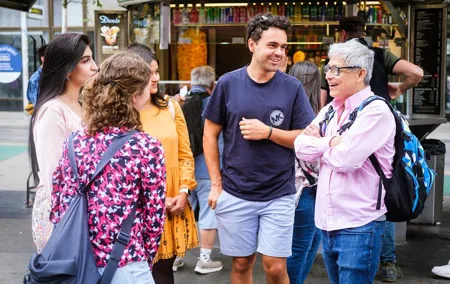
- City Tours & Sightseeing
6 hours
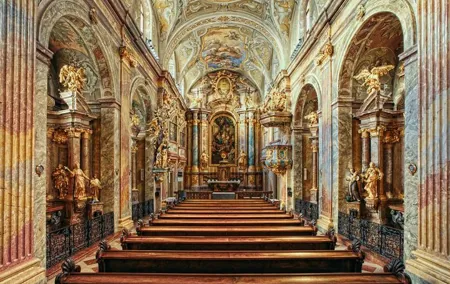
- Culture & History
1 hour
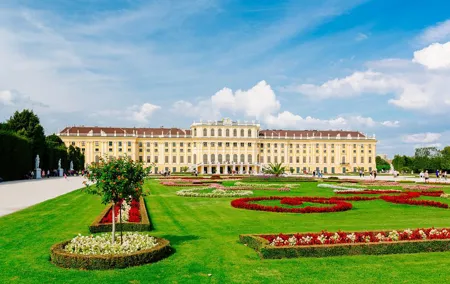
- City Tours & Sightseeing
3 hours
